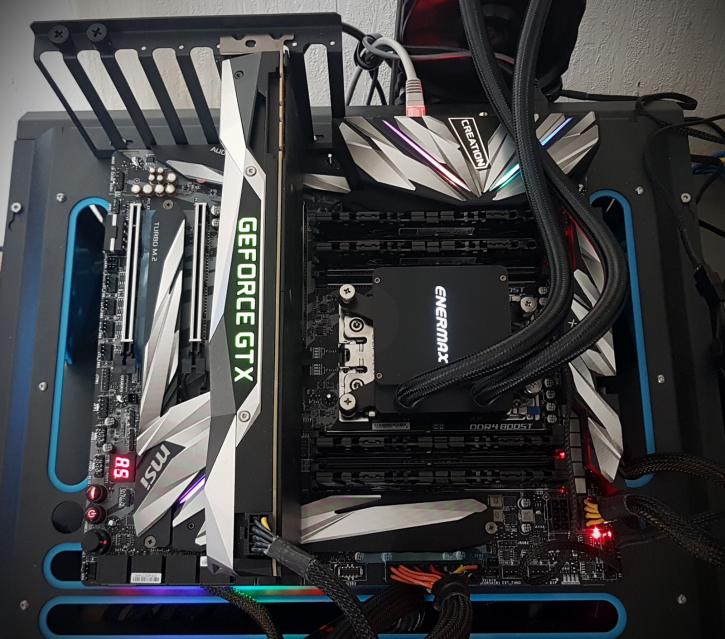Overclocking Your Ryzen Threadripper processor
Overclocking
Overclocking and tweaking then. Always invest in good hardware by the way (MOBO/PSU/Memory/Cooling), the cheaper motherboards often are not well tuned for enthusiast overclocking. Also get yourself a good power supply and proper processor cooling. Overclocking with a more core processor (it doesn't matter if that is Intel or AMD) is often far more difficult than you expect it to be.
For the Ryzen Threadripper reference review we'll use nothing more than this LCS cooler.
Overclocking multi and many cores on a high clock frequency with Threadripper was a simple job, and can be managed relatively easily from the BIOS. You can also use AMD's software tool of course.
Threadripper is binned, they only use the top 5% dies. That means lower voltages. During our measurements, by trial and error we found that at 1.350~1.400 Volts you will end up at roughly 4.0~4.1 GHz. You could apply a fixed voltage, but we do recommend a voltage offset (start with +200Mv), or if possible, leave the BIOS voltage at auto.
BIOS Overclocking
The Guru3D reader-base overclocks mostly from the BIOS to try and find the maximum stable limit. The generic overclock procedure for multiplier based overclocking is as follows:
- Leave base clock (bus) for what it is right now (100 MHz)
- Set the per core multiplier at a maximum of your liking:
- Example 1: 100MHz x 41 = 4000 MHz
- Increase CPU voltage; though AUTO works fine on many motherboards you can do it manually as well. Start at 1.35 volts (or voltage offset (start with +200Mv)) and work your way upwards into a state of equilibrium in perf and cooling temps.
- Make sure your processor is properly cooled as adding voltage = more heat
- Enable XMP/ DOCP on our memory kit (ours does 3200 MHz CL14)
Ryzen Threadripper likes fast memory, so with this quad-channel setup we really can recommend higher frequency memory like the 2933 and 3200 MHz kits used. Save and exit, and you will boot with all your cores tweaked to 4.0 GHz into Windows.
Now, we tried 4.2 GHz on all (32) !! cores, that booted as well / and thus worked but required more Voltage (V1.45+) on the processor, and that also means more heat and power consumption. We settled at that all familiar 4.01GHz on all 32 cores. Memory wise we had 3200 MHz CL14 stable. We inserted all OC benchmarks results throughout the article for you to look at (as you probably have noticed). And that is also testimony to the stability of this tweak.
Yeah, that is close to 6100 points with all cores at 4100 MHz.
I did giggle a little, 31 seconds for a full prime 1024M run.
You could enforce 4100 MHz on all cores for gaming. However, just use gaming mode and save yourself the risk and a truckload of unused power? Most games require 8 threads, at best if you're lucky.
Power consumption when tweaked
So here's where things get a bit scary. With your average 6-core system once you overclock (significantly) and use say Cinebench 15, you can easily add a 100 Watts just for that overclock. Tweaking requires more volts, and for that six-core processor that could be ~17 Watts per core. So think about it for a second, when you have 32 cores, and ALL of them are overclocked. Yep, you just added ~550 Watts if you stress all these cores. it's basic math, everything is multiplied in multitudes.
And with that thesis now in your head, have a peek, the y-axis is showing Watts used:
Now you can see why AMD needs that lower all-core base clock, the TDP and power consumption otherwise cannot be controlled. With 32 cores running 4100 MHz / 1.40v and thus 100% stressed with Cinebench, we reach almost 750 Watts of power consumption on the entire PC. It is surprising to see, but when you think about it, not that surprising at all. This is the reality of many-core beasts, there's just no other way or alternative unless process fabrication gets smaller and less voltage is needed (7nm, for example, should do better).









